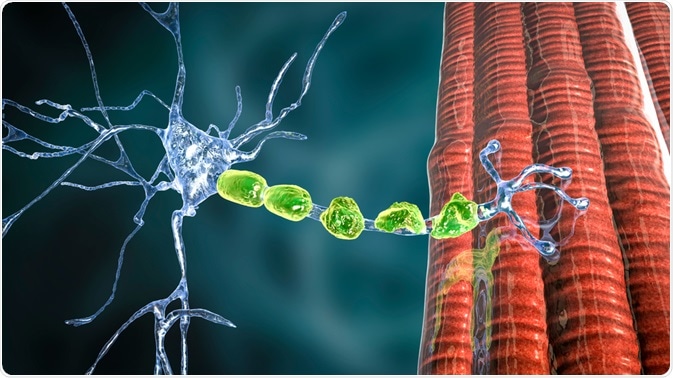Charcot-Marie-Tooth (CMT) disease is an inherited neurological condition that involves muscle weakness and numbness. Symptoms usually present between the ages of five and fifteen, which is when the condition is typically diagnosed.

Image Credit: Kateryna Kon / Shutterstock.com
Symptoms
Initial symptoms that may be indicative of CMT disease include abnormal clumsiness, difficulty walking due to “foot drop,” difficulty lifting the feet from the ground. Characteristic signs and symptoms for diagnosis include:
- Muscle weakness in the feet, ankles, and legs
- Foot deformity (high arches, flat feet hammertoes)
- Numbness in the limbs
- Poor circulation to hands and feet
- Sensory loss in extremities
Diagnosis
As CMT is an inherited disease, the family history of the patient with suggestive symptoms should be discussed.
The physical examination to diagnose CMT involves several simple tests that help to recognize common signs of the disease. This includes tests for muscle strength, reflex response, and physical deformation of the feet, such as high arches or flat feet.
To confirm the diagnosis of CMT, further neurological testing methods are required to determine the root cause of the symptoms and make the correct diagnosis.
Nerve conduction test
A nerve conduction test involves the placement of electrodes on the skin of the patient, which stimulates the peripheral nerves with an electric pulse. This can be used to measure the strength and speed of the messages in the peripheral nervous system (PNS), as reduced activity can be indicative of CMT.
EMG
Electromyography (EMG) is a diagnostic test that involves the placement of an electrode on the skin of the patient to measure the electrical activity of the muscles. This is useful for the diagnosis of CMT because there are significant changes in the muscular activity in affected individuals.
Charcot Marie Tooth (CMT) Information and Treatment
Blood tests
Blood tests may also be taken to check for the presence of gene mutations that are known to cause CMT. This is useful to detect the disease in most individuals who have known mutations, but there are also several unidentified causative genes. Therefore, an individual may be diagnosed with the condition without positive genetic testing results.
Nerve biopsy
Rarely, a nerve biopsy may be required in the diagnostic process, particularly when other testing methods have proven to be inconclusive. This involves obtaining a sample from a peripheral nerve in the leg, which is examined for physical changes under a microscope.
Coping with diagnosis
It is common for patients who are diagnosed with CMT to feel intense emotions such as shock, denial, confusion, fear, or relief, depending on the particular circumstances.
Patients should feel at ease to make decisions about their health and possible treatment when they are ready, without feeling pressured. A strong support network and access to reputable information about the disease is also very helpful as management of the disease and related symptoms begins.
Antenatal diagnosis
As CMT can be caused by a number of known gene mutations, expectant couples with a family history of the disease may wish to find out if their baby is likely to be affected. These tests are carried out during pregnancy to determine whether a baby has inherited the defective genes and their risk for developing CMT.
Chorionic villus sampling (CVS) is a test that involves taking a sample of the placenta from the womb, usually between weeks 11 and 14 of the pregnancy. The sample is then examined for the presence of gene mutations associated with CMT in a laboratory.
Another test that can be used to diagnose CMT in a fetus is amniocentesis. This test involves taking a sample of the amniotic fluid, usually between weeks 15 to 20 of the pregnancy. The sample is then examined for genetic mutations that are indicative of CMT.
Depending on the results of the tests, expectant parents can make the decision on whether they want to continue the pregnancy or not. However, parents should be aware that the severity of the condition can vary widely and that the genetic tests are not currently able to predict the true impact of the condition on the child’s quality of life.
References
Further Reading